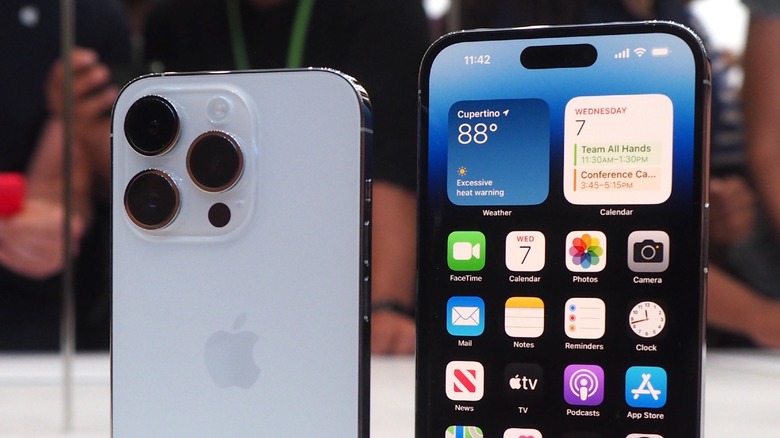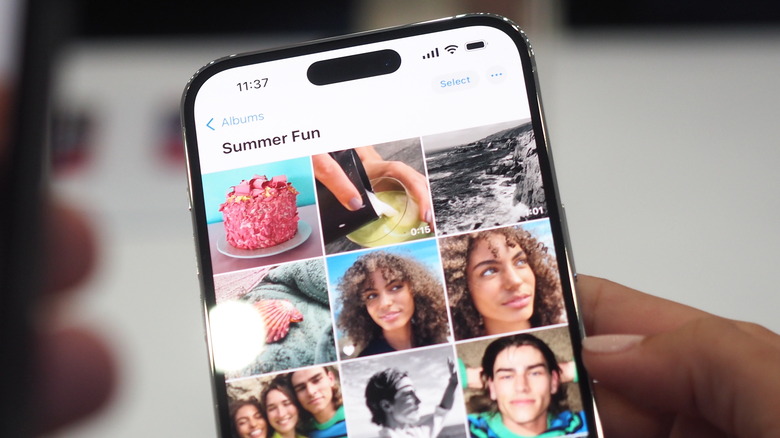The iPhone 14 Pro Takes A Step Back In Close-Up Focus
After some initial speculation, the full specs of the iPhone 14 (and its many variations) were revealed during Apple's September 2022 event. Now we know about features like Dynamic Island, which cleans up the iPhone's screen notch that was necessary to accommodate the camera, and we learned that Apple has completely removed the SIM tray in favor of eSIM technology. We also know that Apple is planning to provide a more advanced camera system compared to its older smartphone models thanks to upgraded hardware and software.
This should, according to Apple, provide you with sharper photos and videos in a variety of lighting conditions, among other factors, and in general, everything in the content you capture should just look better. However, those improved visuals might not be attainable in some specific situations. It seems as though the iPhone 14's primary wide camera — despite receiving the most substantial upgrade compared to the others — may have been given an unintentional weakness.
Here's the problem
Lux, the Apple Design Award-winning photography studio behind the Halide app, got some hands-on time with Apple's latest portable device, and the field tests revealed something surprising. The iPhone 14's primary camera is indeed equal to or better than what we already have on the iPhone 13 in most regards, but it's got a problem with focusing on close-up subjects.
According to Lux's data, the iPhone 14 has a minimum focus distance of 7.8 inches (200mm), an increase of about 2 inches compared to the 5.9 inches (150mm) minimum distance possible with the iPhone 13. That 2-inch jump likely won't have any noticeable effect when you're taking most photos or videos, but it might cause problems when you want to capture something up close. Specifically, Lux believes the change in distance will lead to the iPhone 14 switching between the standard and ultra-wide camera more often than the iPhone 13.
You'll still ultimately be able to take close-up photos with the updated ultra-wide camera (which has the same 20mm minimum focus distance as the one found in the iPhone 13). But if you've ever tried to take pictures of something that close, you're probably familiar with the annoyance of watching your framing shift dramatically as the iPhone swaps between cameras with no warning.

